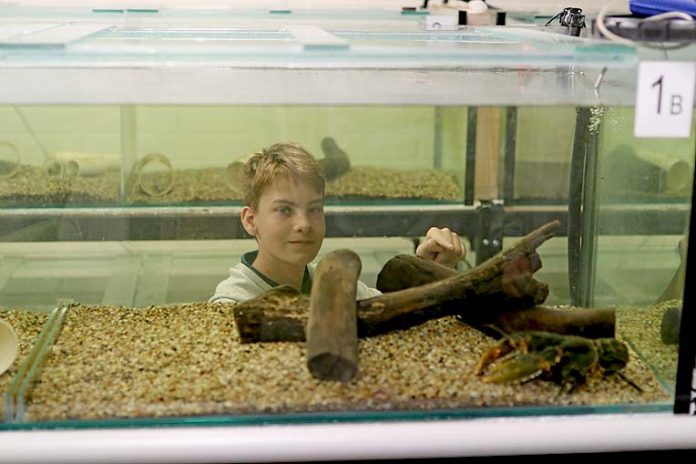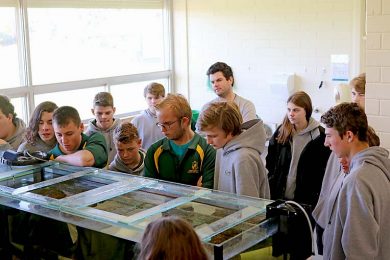

GRANT High School students are using science to investigate the decline of the Limestone Coast’s unique endangered Spiny Crayfish.
Instead of teaching the traditional science curriculum, the school has adapted a hands-on approach which incorporates a diverse learning and discipline.
Trekking to Gouldens Sinkhole last week, 19 outdoor studies students helped collect a “prickly-back” to relocate to the school for examination.
School science coordinator David Thompson said the animal would spend the rest of its life in the school’s specially designed enclosure.
“By looking after this marine animal, the students learn about its basic biology, water quality, plumbing, water flow, nitrogen phosphoric and ammonia and oxygen cycles,” he said.
“This is students looking at real-world problems, which are significant to the community, to make a difference.
“The big question is what is causing such a large amount of aberrant individuals so we will help to answer that question.”
Mr Thompson said the project is a collaborative effort between the school, Department of Environment and Water and Nature Glenelg Trust and is expected to run for at least a decade.
“This project kicked off around two years ago when we applied for a $50,000 Department of Education Specialist Schools grant,” he said.
“Our laboratory was basically just a tin shed before we fitted it with all required equipment to create a controlled, secure and safe environment.

“We will spread the funding over the 10 years, along with the $5000 grant we received from the City Council.”
Mr Thompson said students needed to prove to the Department of Environment and Water and Nature Glenelg Trust they could look after the animal before capturing it.
“For the past year and a half, students have been filling tanks with yabbies, testing water, investigating what food works and working on water chemistry,” he said.
“Once we were confident and after applying for permits, it was agreed we would take one individual.
“I do not know anyone who has successfully kept these in captivity so we may be the first.”
The species is culturally and historically significant in the Limestone Coast according to Mr Thompson.
“Culturally they are significant to Aboriginal ancestors and historically people would remember prickly-backs from their youth,” he said.
“These are part of our iconic freshwater sinkholes so economically there could be a tourism payoff here.
“This is the top dog in its environment so it is important to maintain its natural surroundings.”
Mr Thompson said he hoped the project would uncover answers to significant underlying scientific questions, while also raising awareness for the endangered species.
“We hope to move further into breeding programs but for now this individual will be a display project,” he said.
“From a community point of view, everyone knows about mammal endangered animals but not a dirty-looking crayfish.
“We remind people these creatures are important and we need to take care of them before they are all gone.”









